
From the Archives: Grand Coulee Dam
There is no monument featuring the names of the men who died building the Grand Coulee Dam, who numbered 88 by the time it was completed. Susan Dechant, who lives in Kettle Falls, is lobbying for a new monument to be placed. She's telling the story to anyone who'll listen, and even led a field trip of local Coulee officials to Colville so they could see for themselves what was taken from them so long ago. Here is a gallery of historical photos of the building of the dam.
Section:Picture story
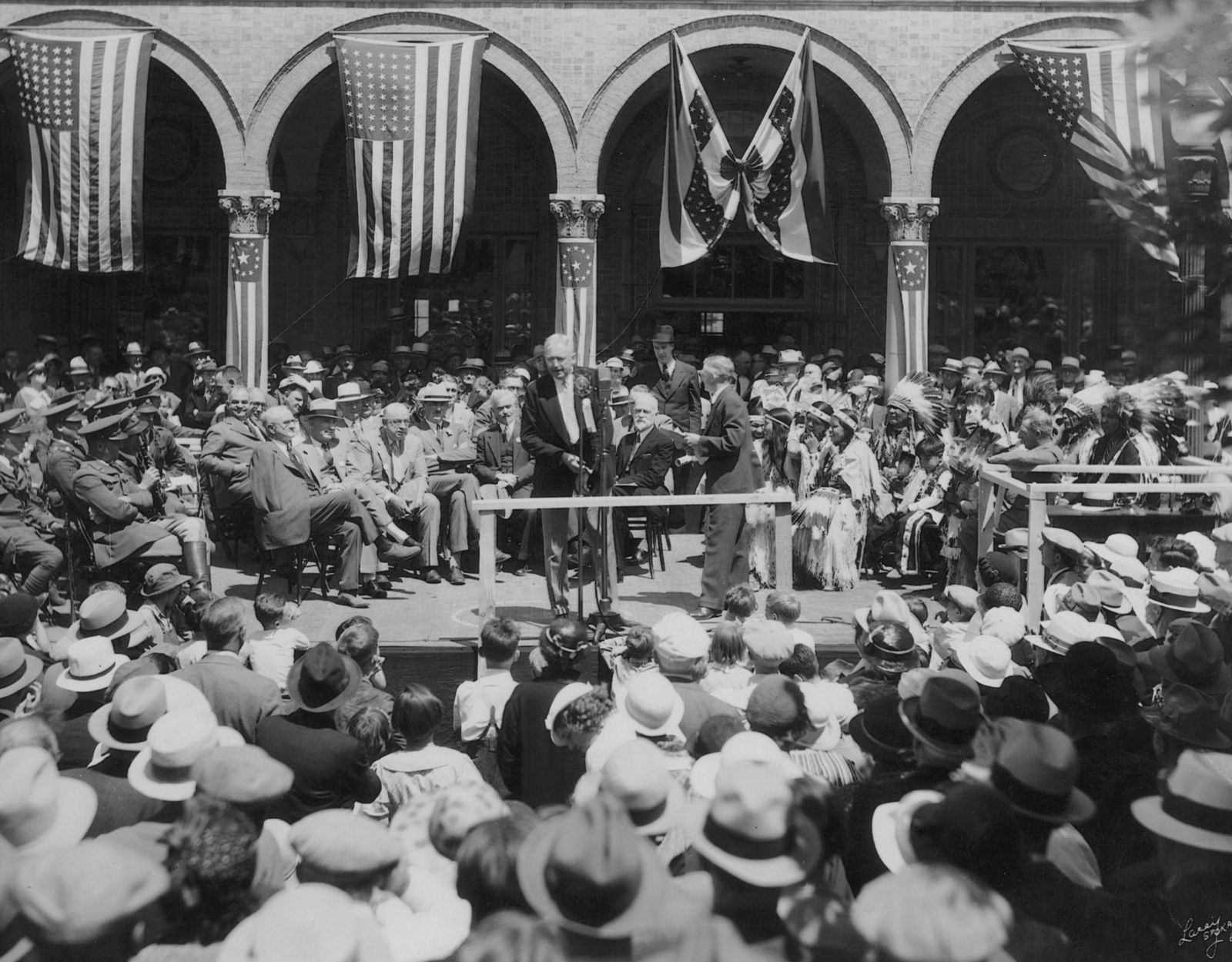
Fred K. Jones, at the podium, President of the Spokane Chamber of Commerce in 1933 and 1934, presided over the opening of bids for the construction of the Grand Coulee Dam on Riverside Avenue in front of the Chamber of Commerce Building on June 18, 1934.
Courtesy of Barry K. Jones The Spokesman-Review
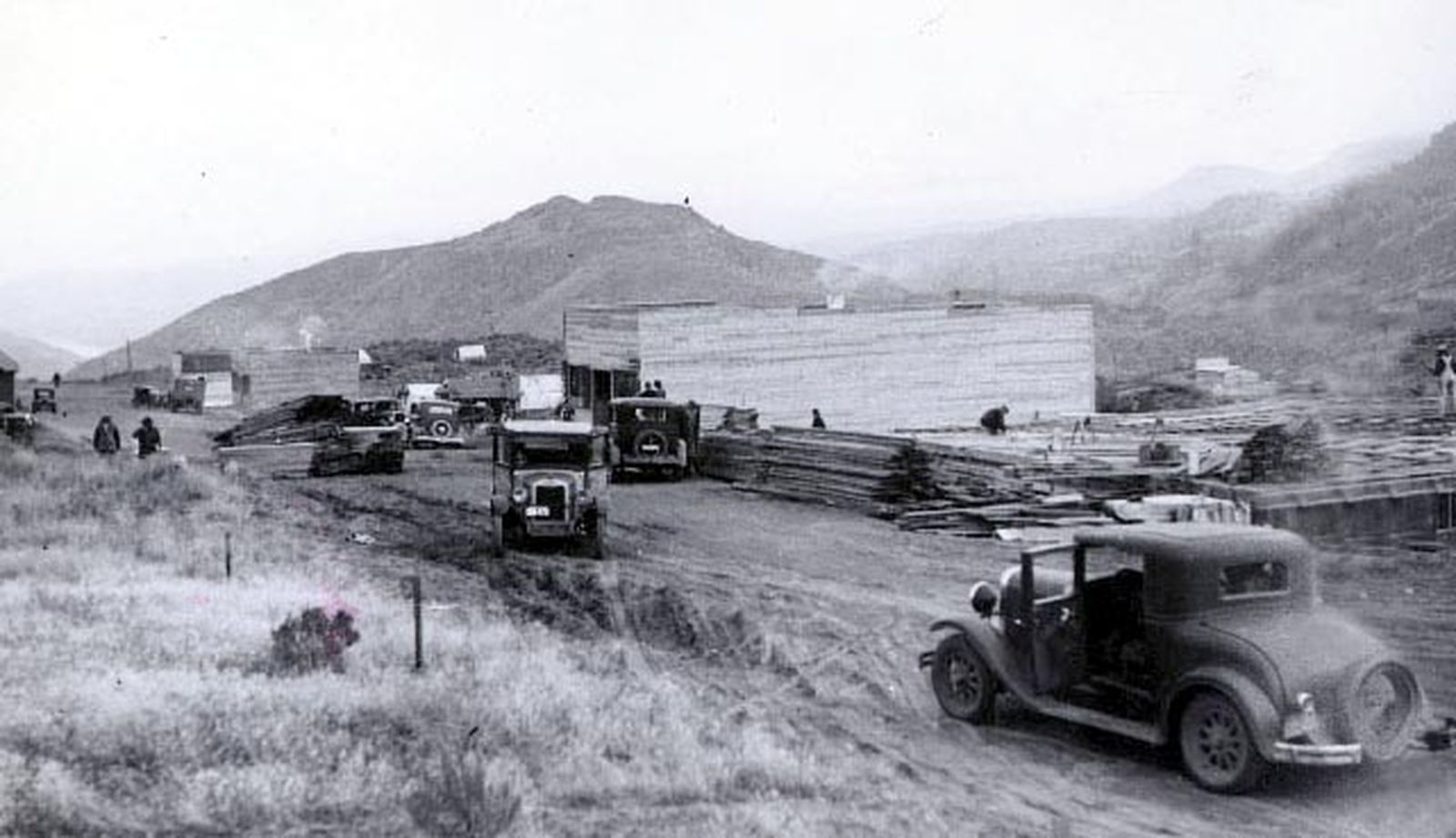
Workmen in Grand Coulee, Wash. hurry on November 9, 1933, to finish construction of a new building in town before winter begins. The town is located on the “breaks” or table land above the Columbia river, about two miles from the site of the Grand Coulee dam.
Photo Archive The Spokesman-Review
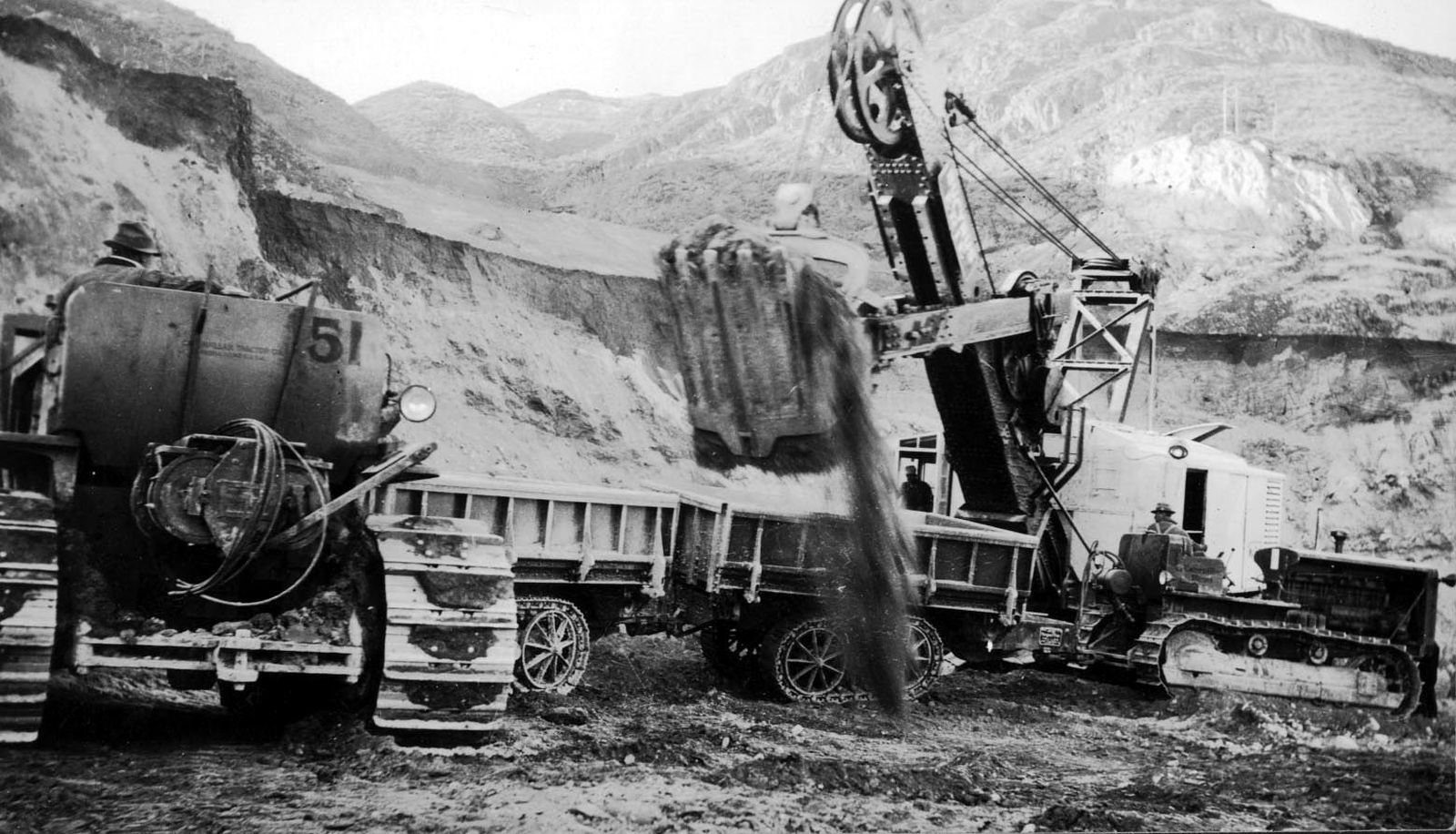
Taken in the early 1930’s, this photograph shows a Bucyrus Erie steam shovel with caterpillar tracks, right, one of the biggest pieces of machinery available at the time, and a smaller tractor on the left. The vehicles are helping to clear the base for the Grand Coulee Dam.
Courtesy of G.E. “Boge” Enberg The Spokesman-Review
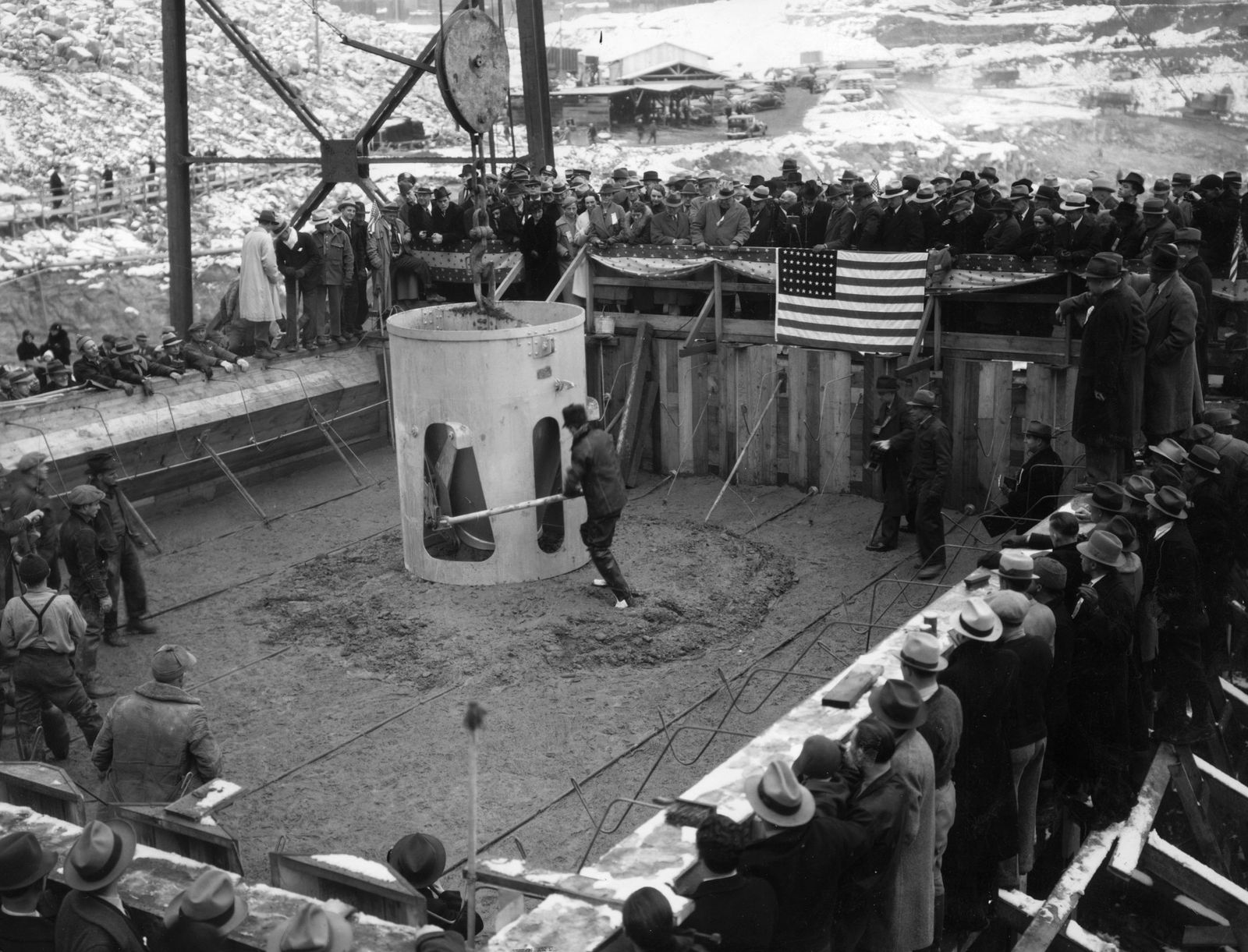
It was a wintry day in 1935, on December 6, with the ground covered with snow, when Governor Clarence D. Martin tripped the first bucket of concrete into Grand Coulee Dam.
Photo Archive The Spokesman-Review
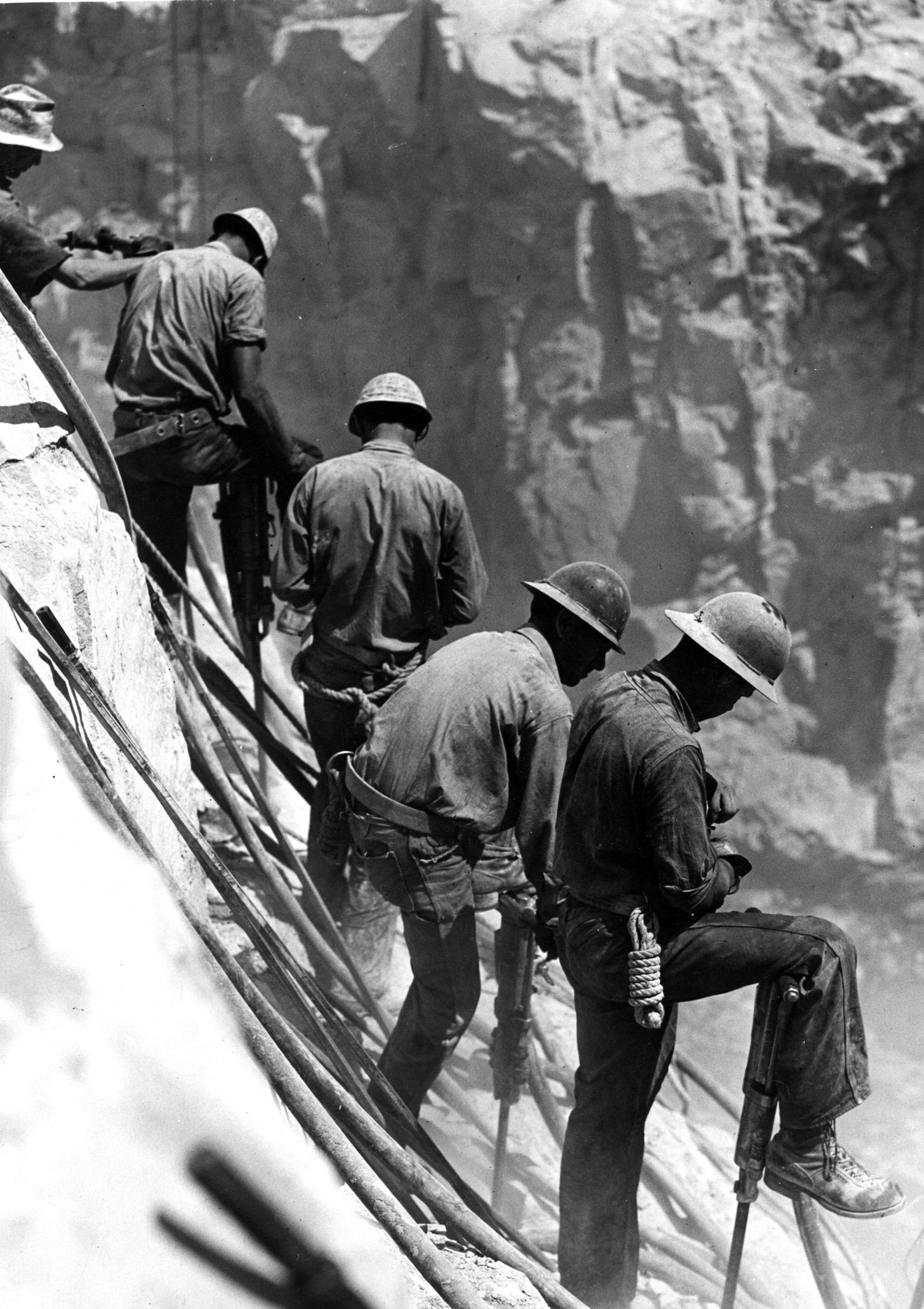
Just making more holes in the rock for some of the million and a quarter pouds of dynamite being used to clear off a firm foundation for the Grand Coulee Dam, first unit under construction on the Columbia Basin Reclamation project.
Photo by Bureau of Reclamation The Spokesman-Review
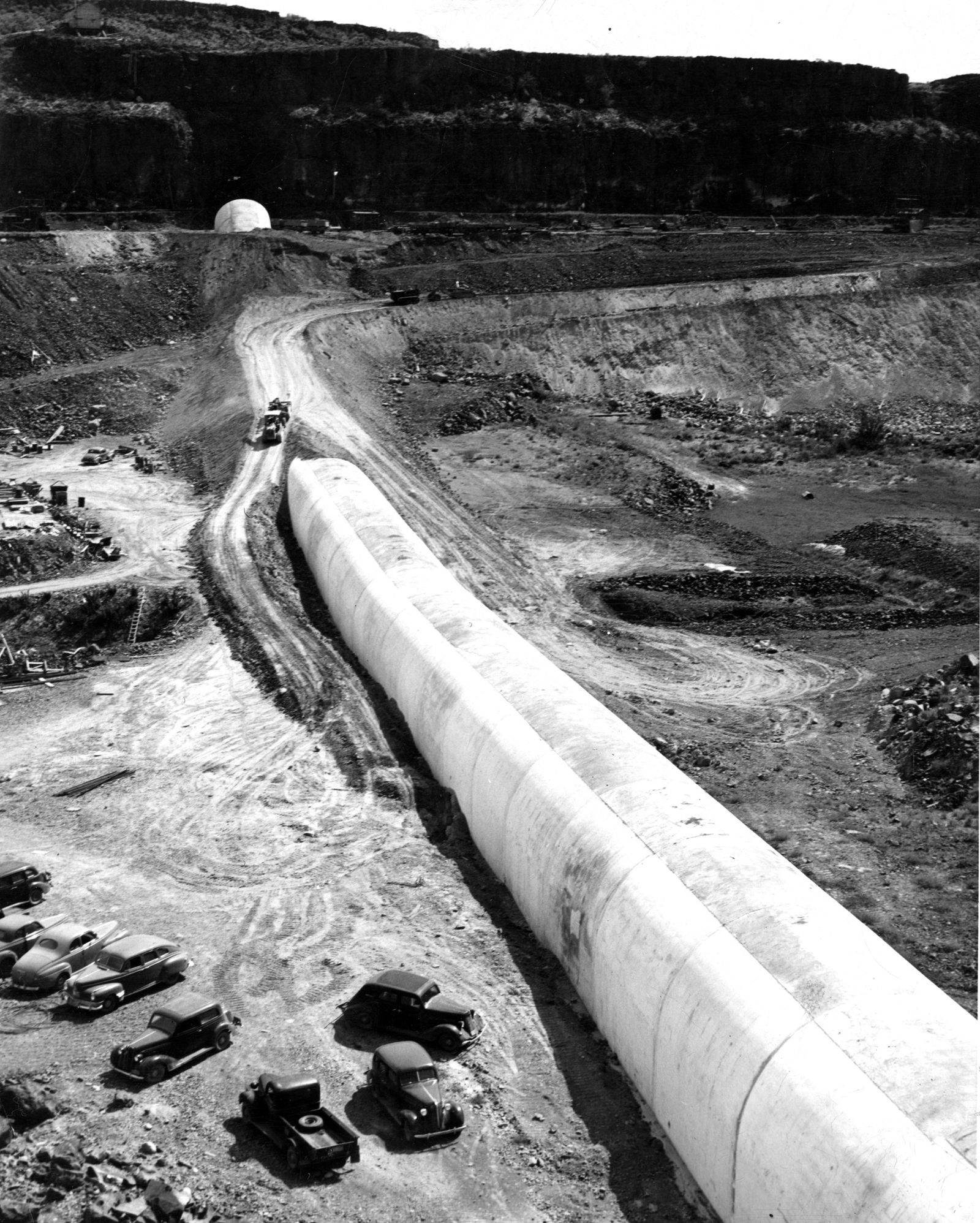
The construction of the Grand Coulee Dam from 1935 to 1940 created jobs, electricity and irrigation for the Inland Northwest region.
Photo by Bureau of Reclamation The Spokesman-Review
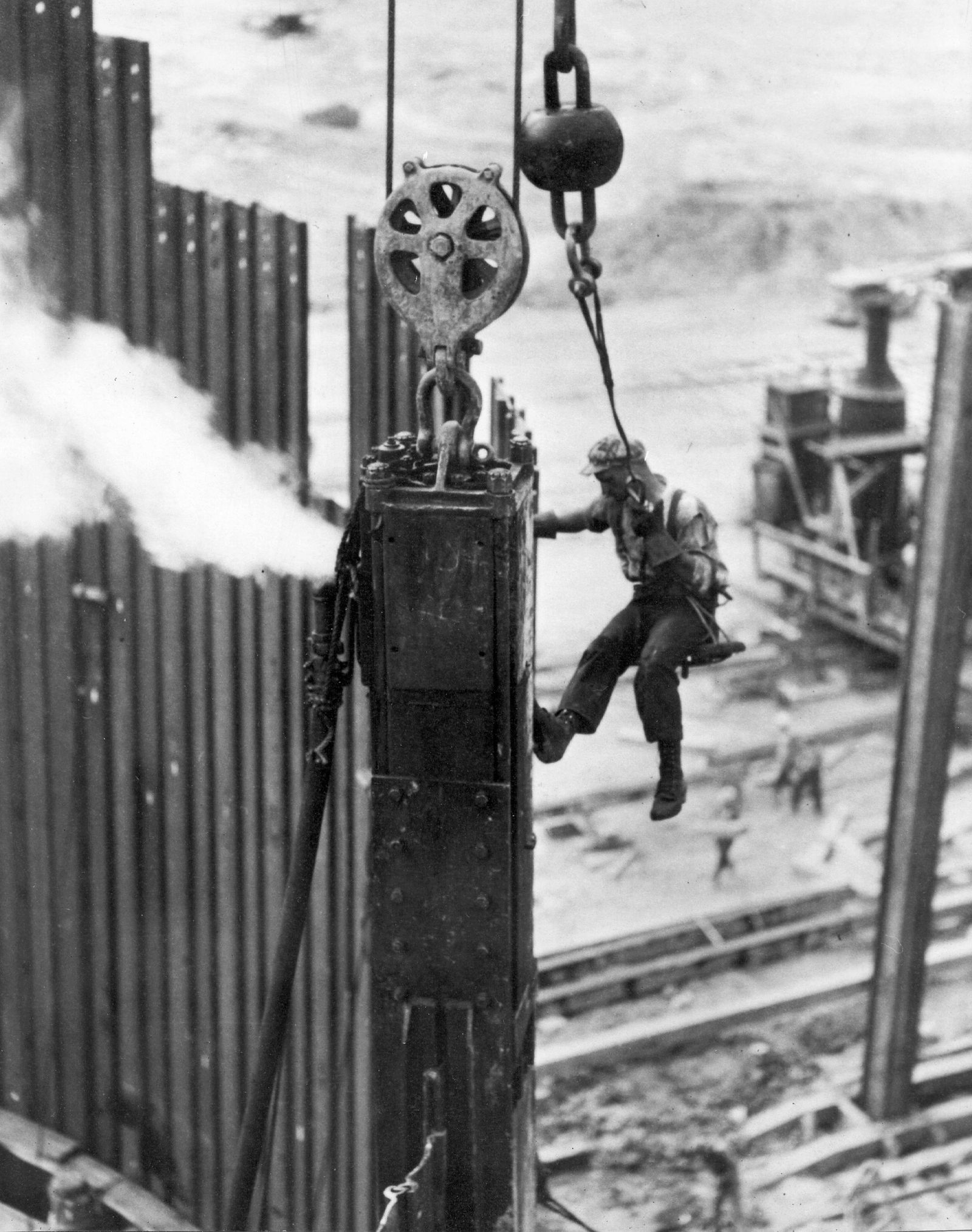
Construction of Grand Coulee Dam, August 1936.
Photo Archive The Spokesman-Review

From his official car President Roosevelt inspected the Grand Coulee Dam in October of 1937, which when completed, will be the largest structure ever built by man. The Chief Executive is sitting on the far side in the back seat. With were U. S. Reclamation Engineer Frank Banks, center, and Sentor Louis Schuellenbach.
Photo Archive The Spokesman-Review

Construction of the dam showing the upstream face in 1937.
Photo by Bureau of Reclamation The Spokesman-Review
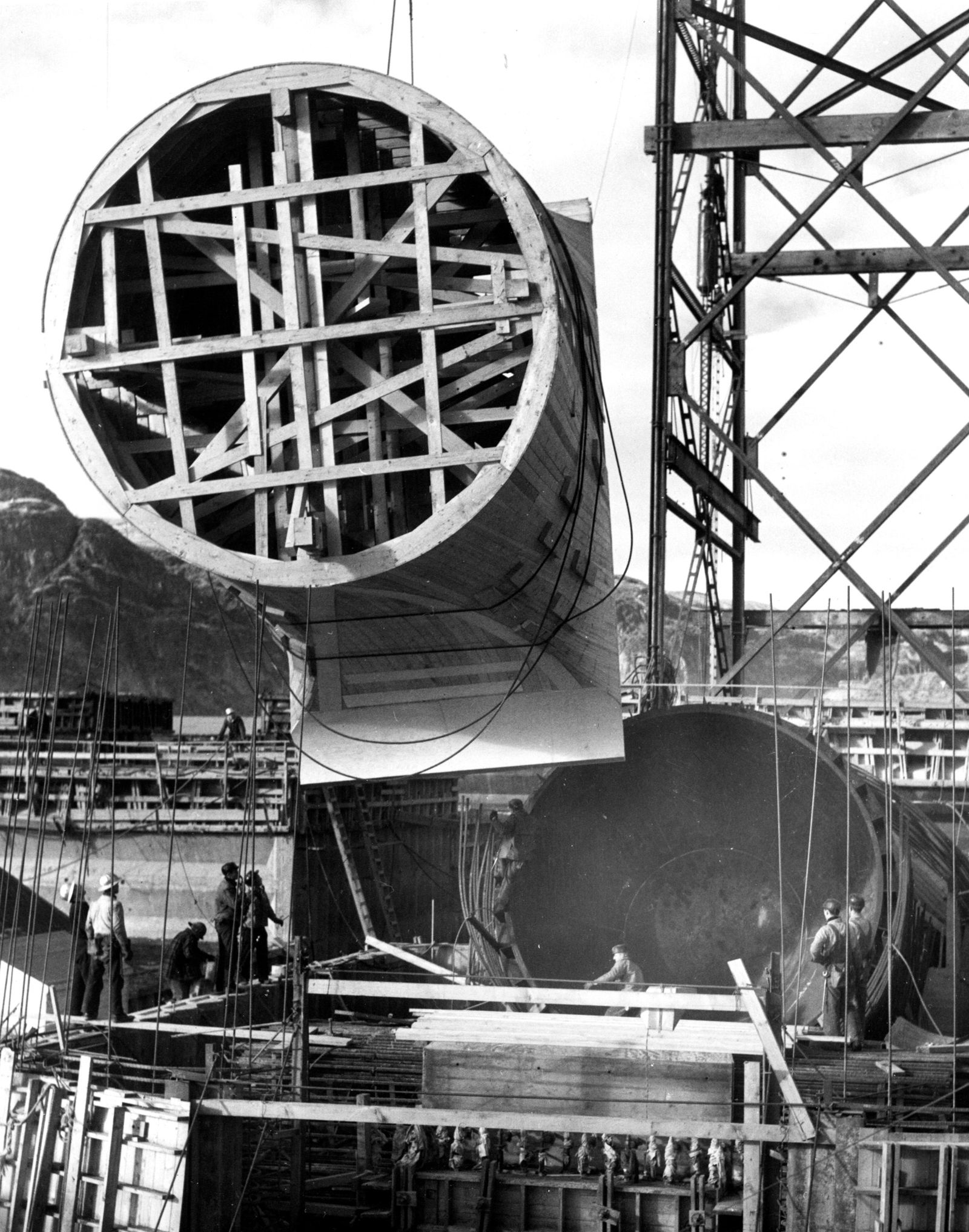
The construction of the Grand Coulee Dam from 1935 to 1940 created jobs, electricity and irrigation for the Inland Northwest region.
Courtesy of Consolidated Builders, Inc. The Spokesman-Review
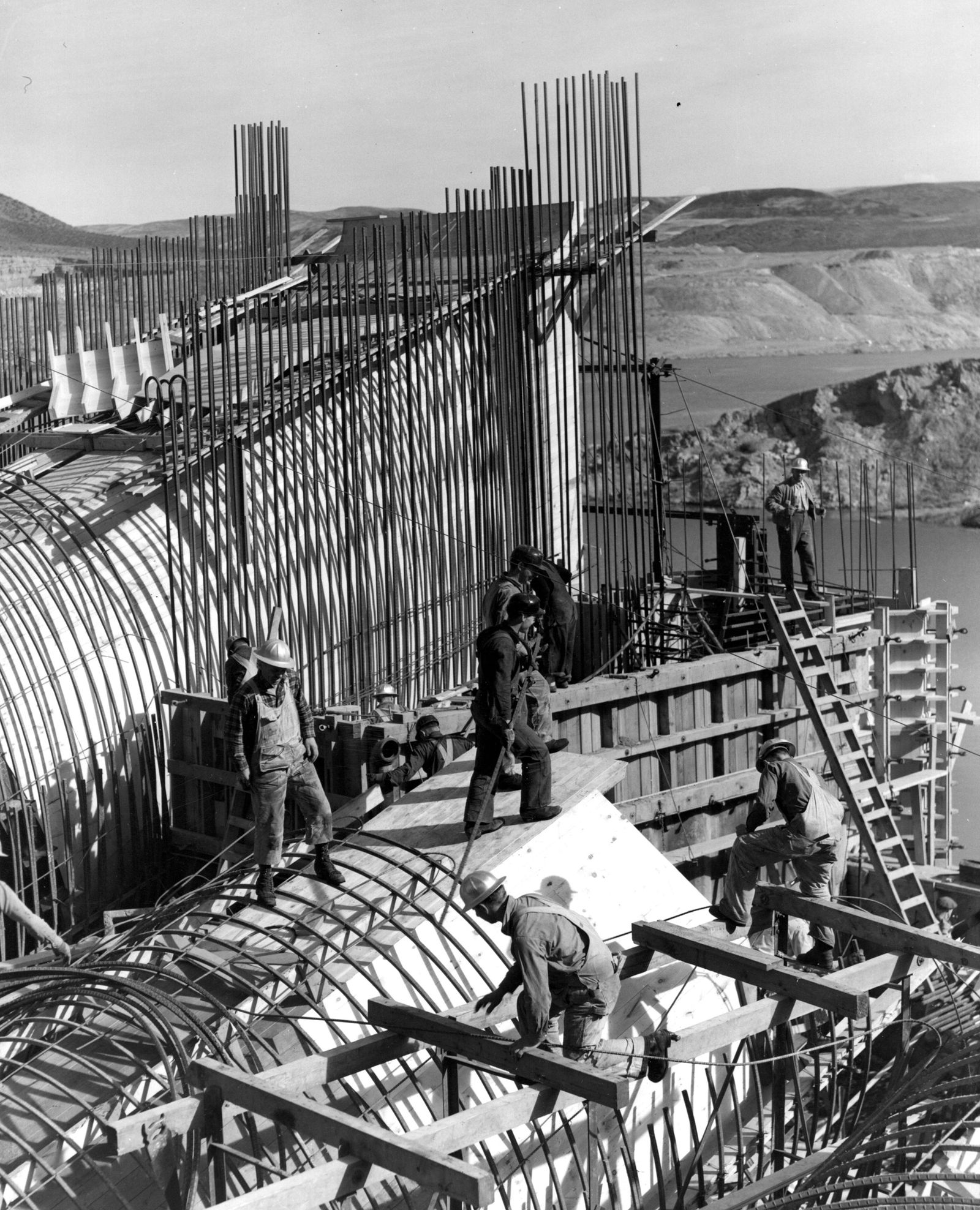
The construction of the Grand Coulee Dam from 1935 to 1940 created jobs, electricity and irrigation for the Inland Northwest region.
Photo by Bureau of Reclamation The Spokesman-Review

The construction of the Grand Coulee Dam from 1935 to 1940 created jobs, electricity and irrigation for the Inland Northwest region.
Photo Archive The Spokesman-Review
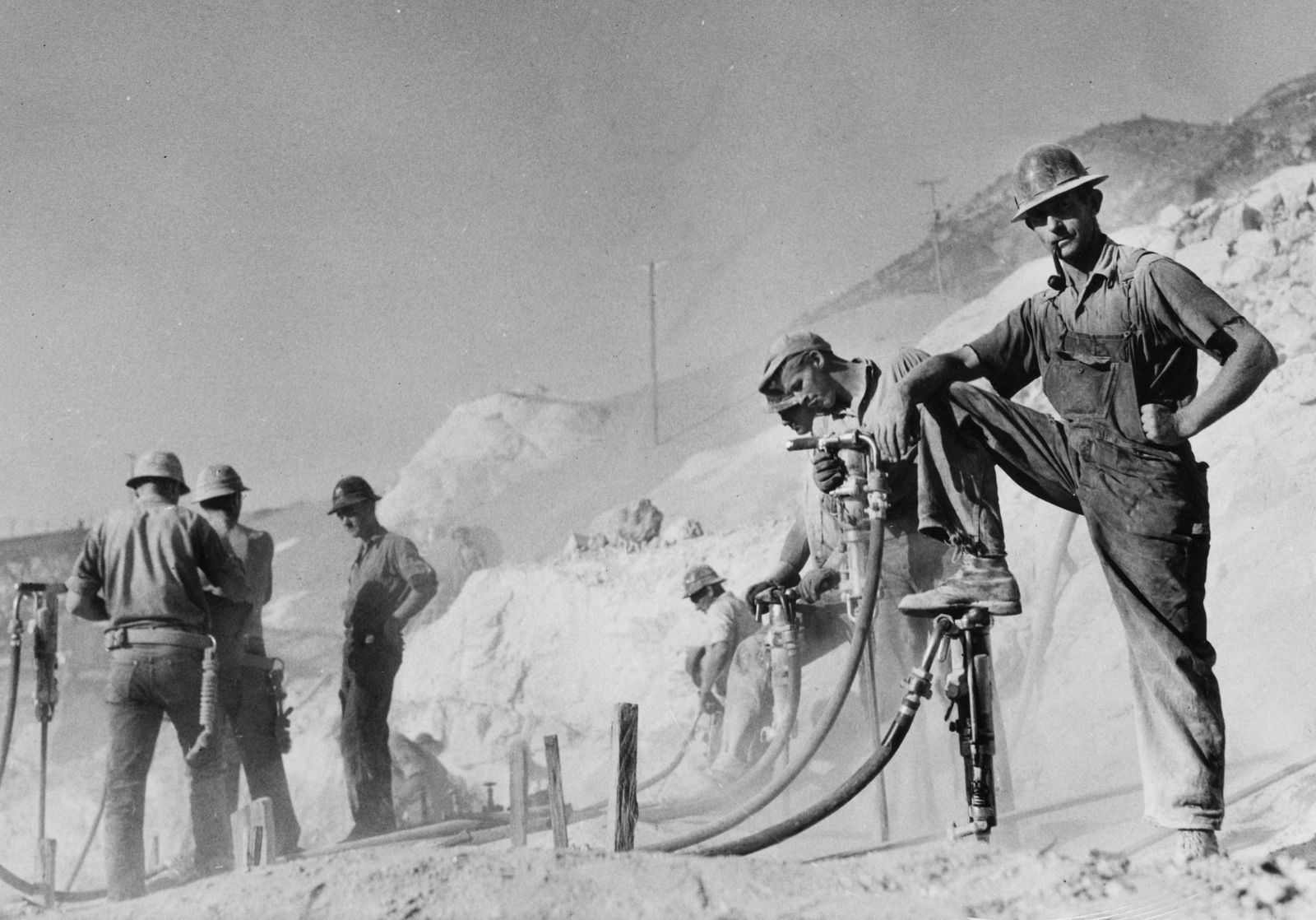
The construction of the Grand Coulee Dam from 1935 to 1940 created jobs, electricity and irrigation for the Inland Northwest region.
Photo Archive The Spokesman-Review
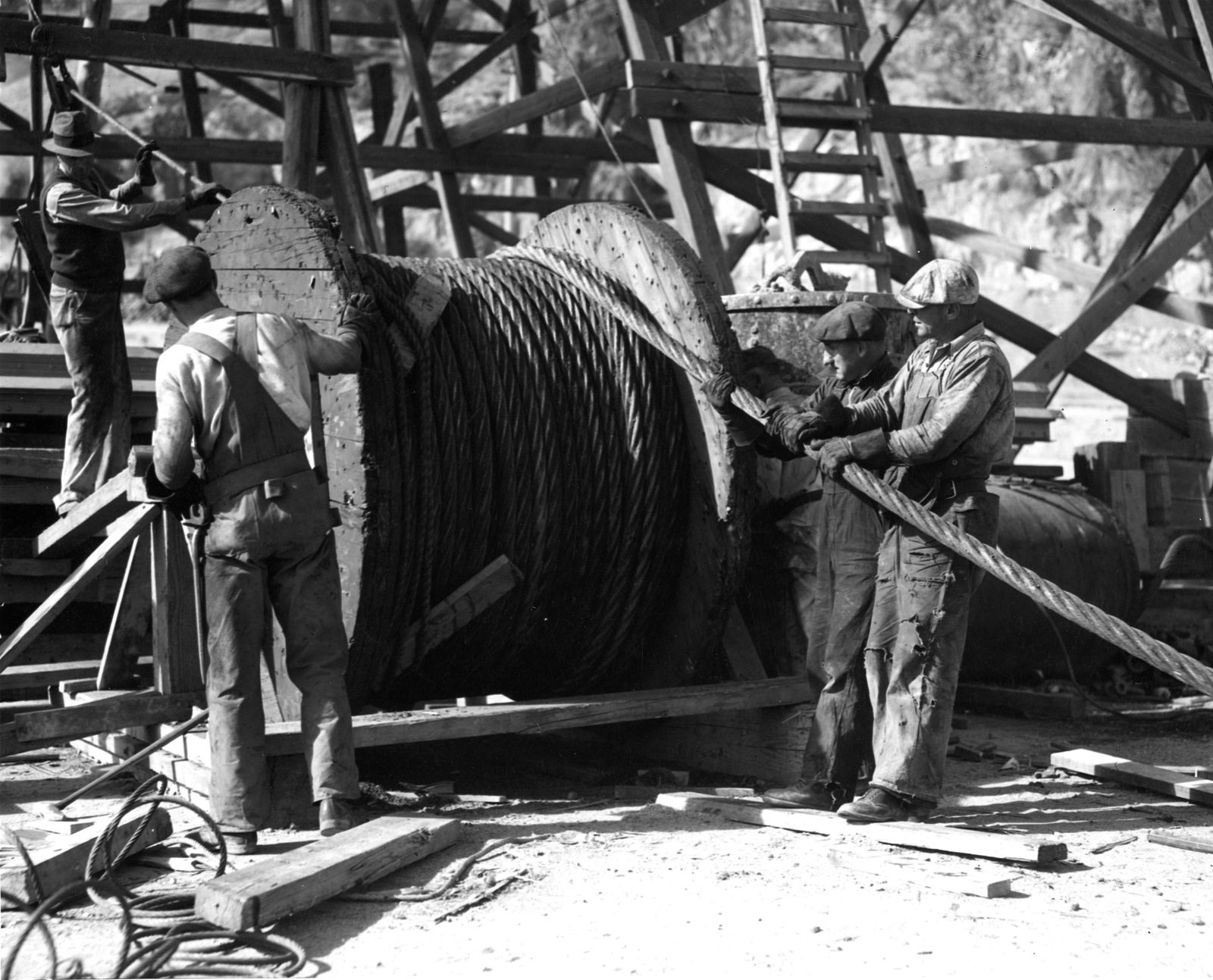
The construction of the Grand Coulee Dam from 1935 to 1940 created jobs, electricity and irrigation for the Inland Northwest region.
Photo Archive The Spokesman-Review

The construction of the Grand Coulee Dam from 1935 to 1940 created jobs, electricity and irrigation for the Inland Northwest region.
Courtesy of Consolidated Builders, Inc. The Spokesman-Review

The construction of the Grand Coulee Dam from 1935 to 1940 created jobs, electricity and irrigation for the Inland Northwest region.
Photo by Bureau of Reclamation The Spokesman-Review

The construction of the Grand Coulee Dam from 1935 to 1940 created jobs, electricity and irrigation for the Inland Northwest region.
Photo by Bureau of Reclamation The Spokesman-Review
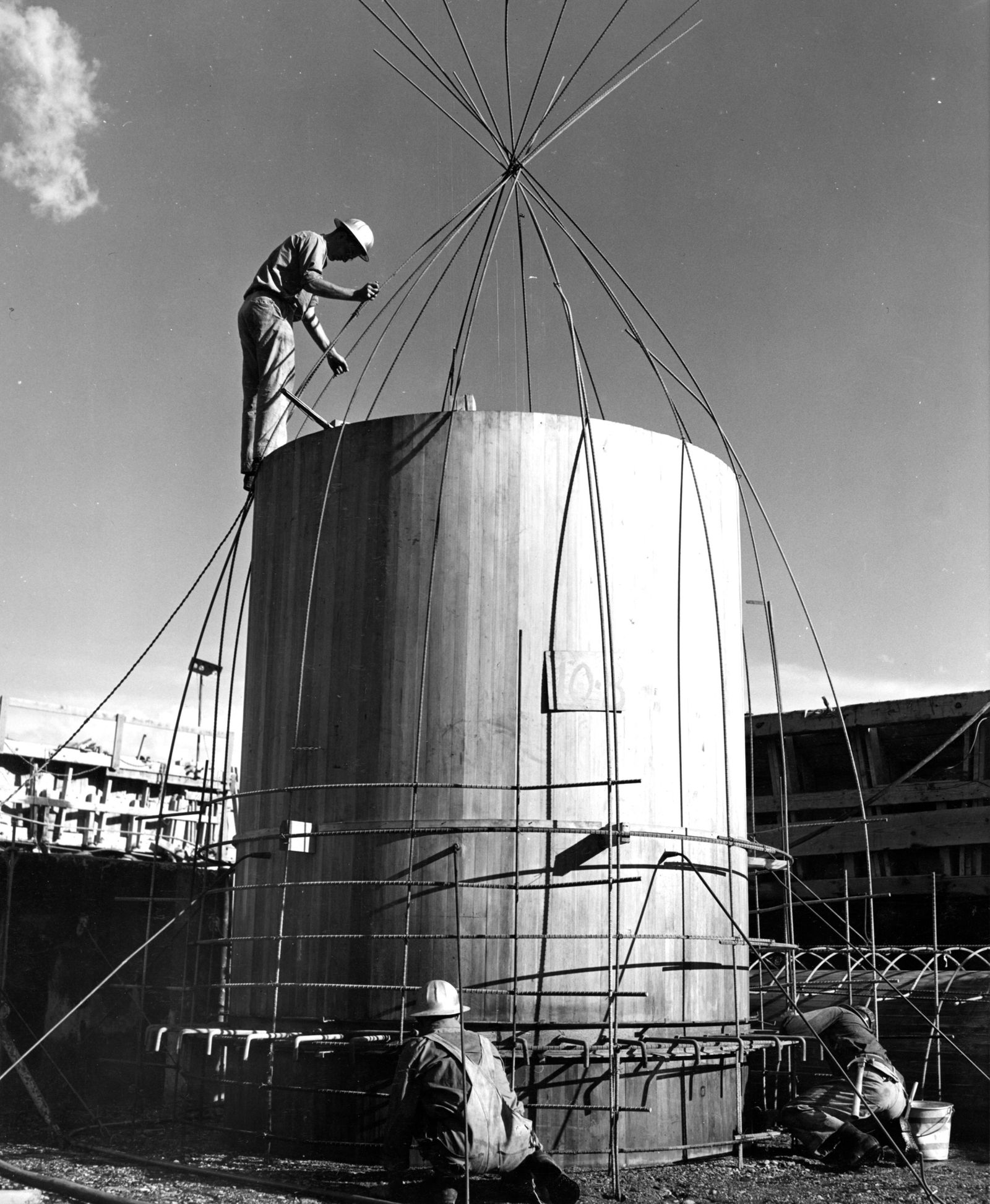
The construction of the Grand Coulee Dam from 1935 to 1940 created jobs, electricity and irrigation for the Inland Northwest region.
Photo by Bureau of Reclamation The Spokesman-Review

Brawny men of steel who raise the skelton of Grand Coulee Dam above the concrete work in 1939. The trick vests are for unexpected drops into the water.
Photo Archive The Spokesman-Review

The construction of the Grand Coulee Dam from 1935 to 1940 created jobs, electricity and irrigation for the Inland Northwest region. Photo taken in 1939.
Courtesy of Consolidated Builders, Inc. The Spokesman-Review
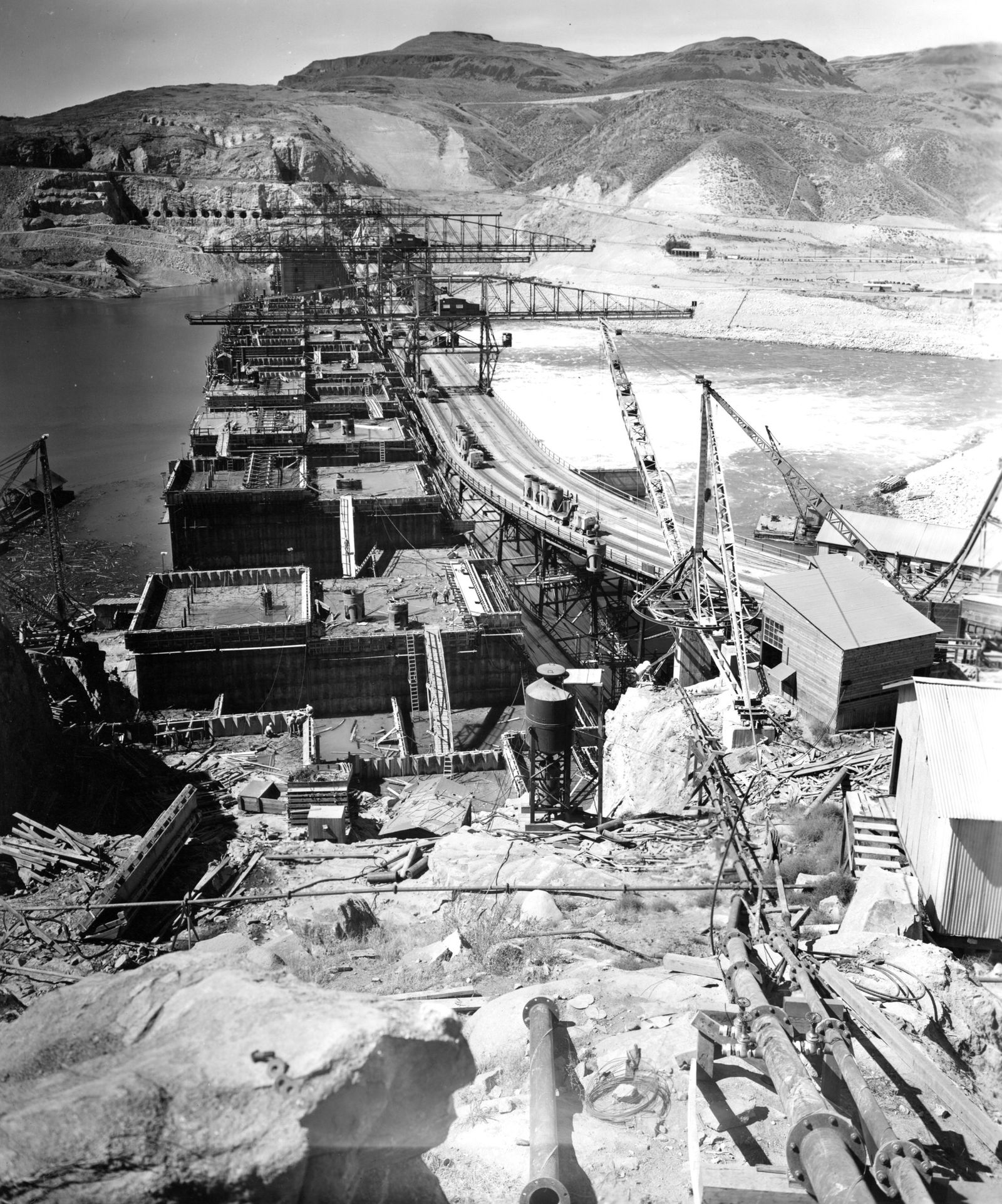
The construction of the Grand Coulee Dam from 1935 to 1940 created jobs, electricity and irrigation for the Inland Northwest region.
Courtesy of Consolidated Builders, Inc. The Spokesman-Review

Upstream face of the west bank concreted area.
Photo Archive The Spokesman-Review
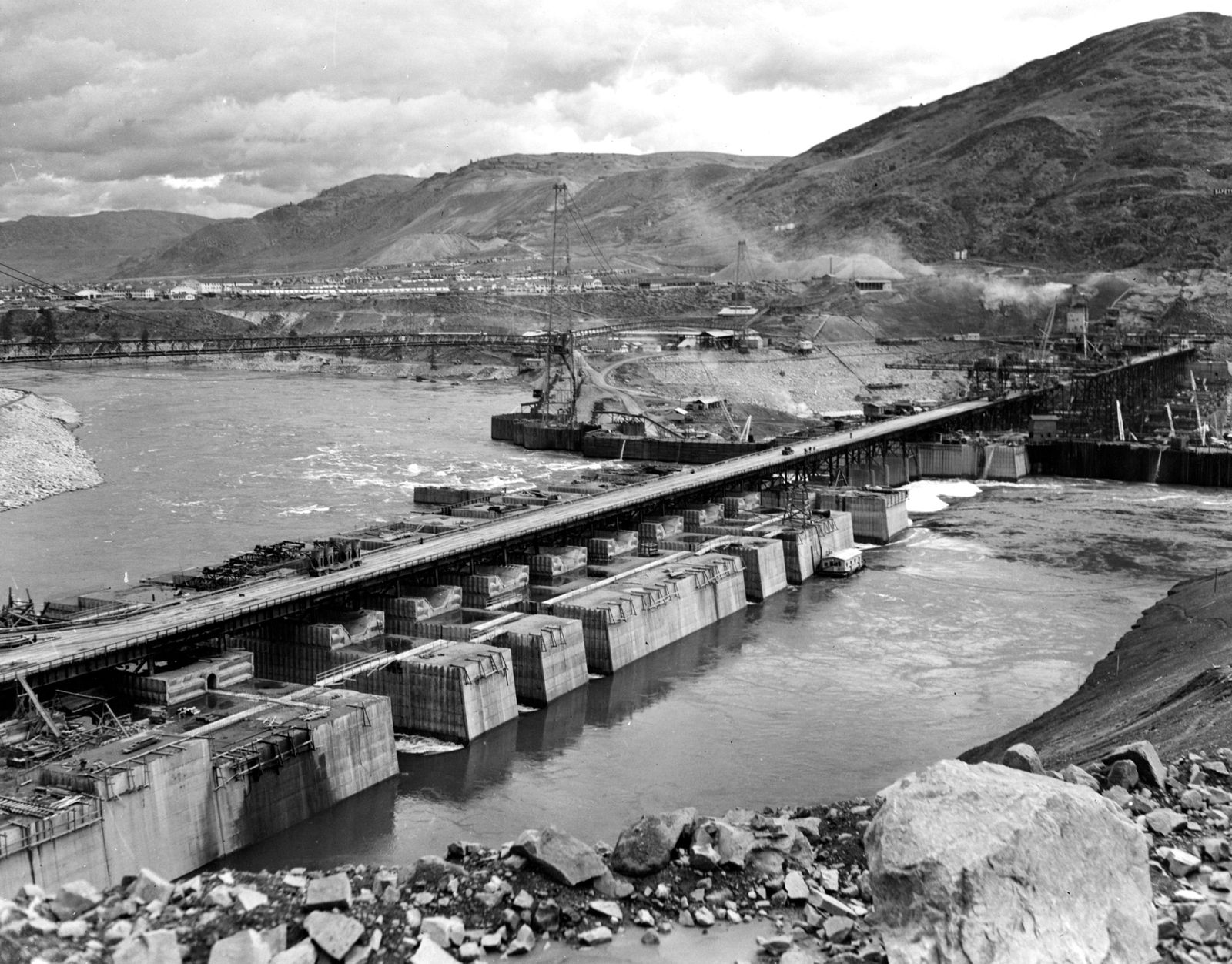
The construction of the Grand Coulee Dam from 1935 to 1940 created jobs, electricity and irrigation for the Inland Northwest region.
Photo Archive The Spokesman-Review
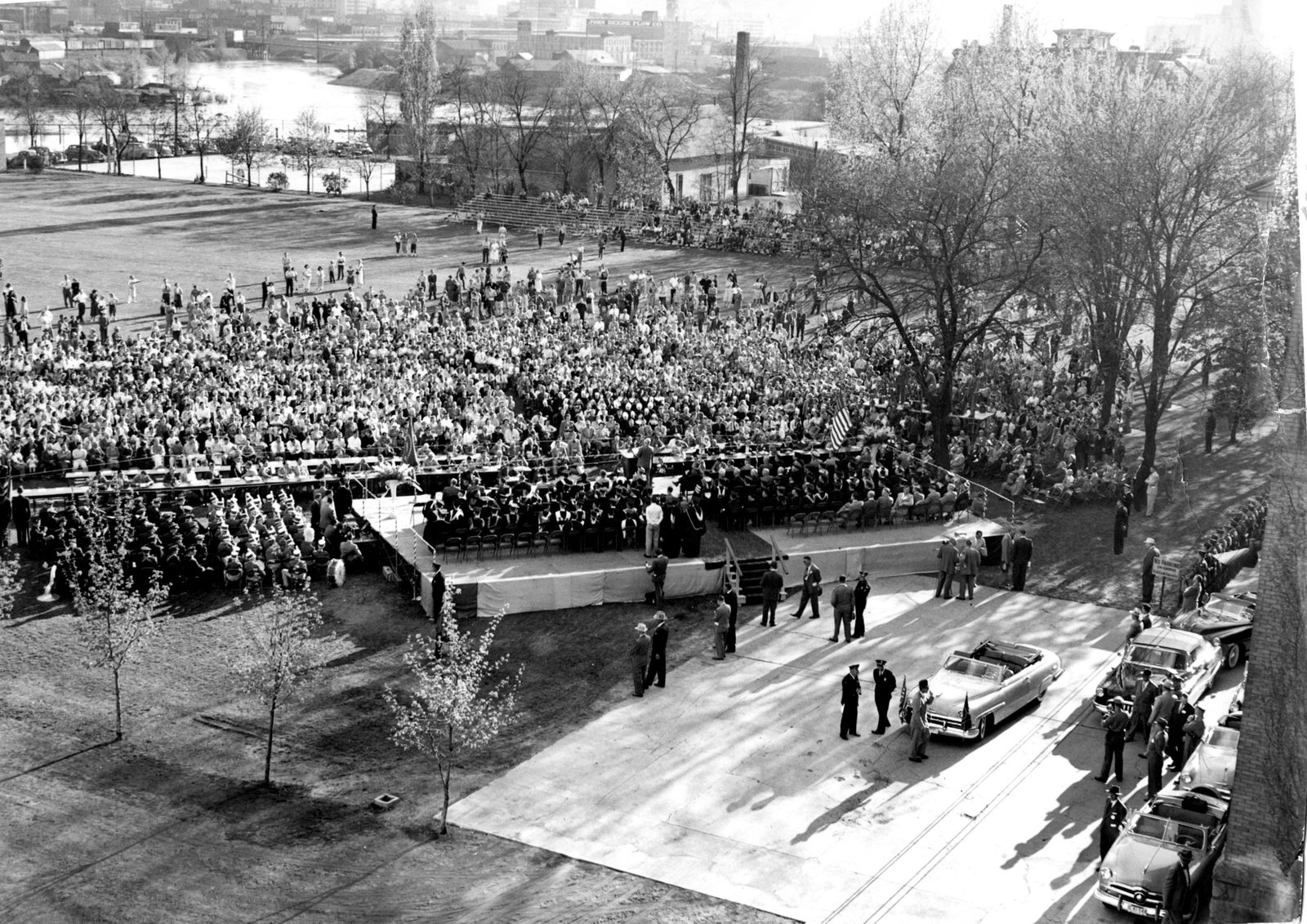
Dedication of Grand Coulee Dam on May 11, 1950.
Photo Archive The Spokesman-Review
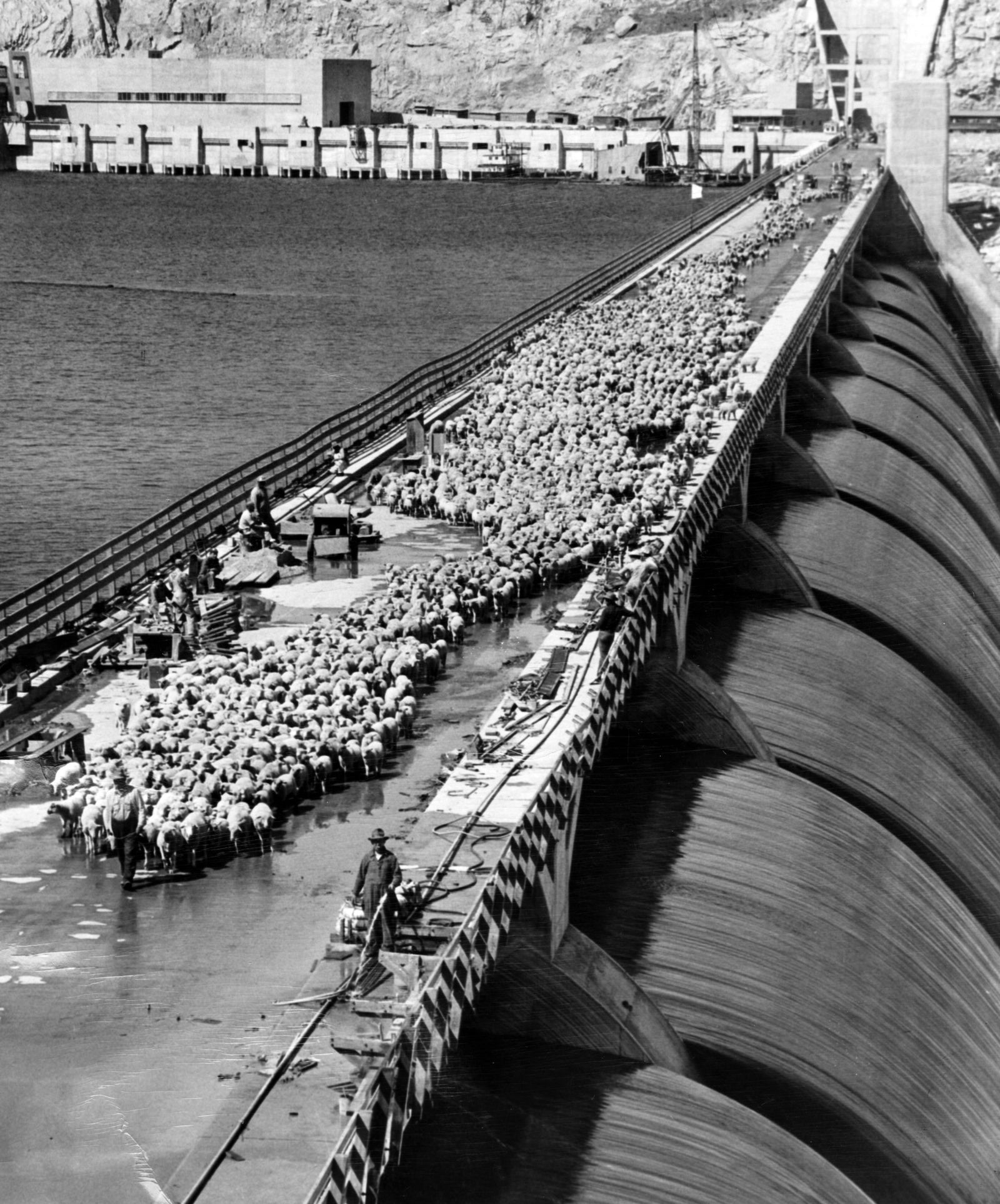
A flock of 2600 sheelp belonging to Joe Hodgen of Adrian makes its last annual trek across Grand Coulee Dam, heading for summer pasture. The grasslands which provided feed for the flock which each year has moved north through the Grand coulee will be flooded next year. The coulee beomes the equalizing reservoir for the Columbia Basin irrigation project. Hodgen has been taking his sheep through the area for 32 years. They’ll go by truck hereafter.
Photo by Bureau of Reclamation The Spokesman-Review

Despite the absence of flow down Grand Coulee dam’s spillway, the Columbia river is choppy as a huge barge with its steam-operated crane dredges out debris. Turbulence is caused by underwater pressures from the powerhouse outpourings. The dredge, which first saw service in 1949-51 after the 1948 flood, will be operated on a two-shift-per-day basis five days a week until high water this summer forces the operation to cease. The dredge moves downstream periodically so that discharge tubes can spill water from Lake Roosevelt, whose level has remained high all winter.
Courtesy of E. Hertzog The Spokesman-Review
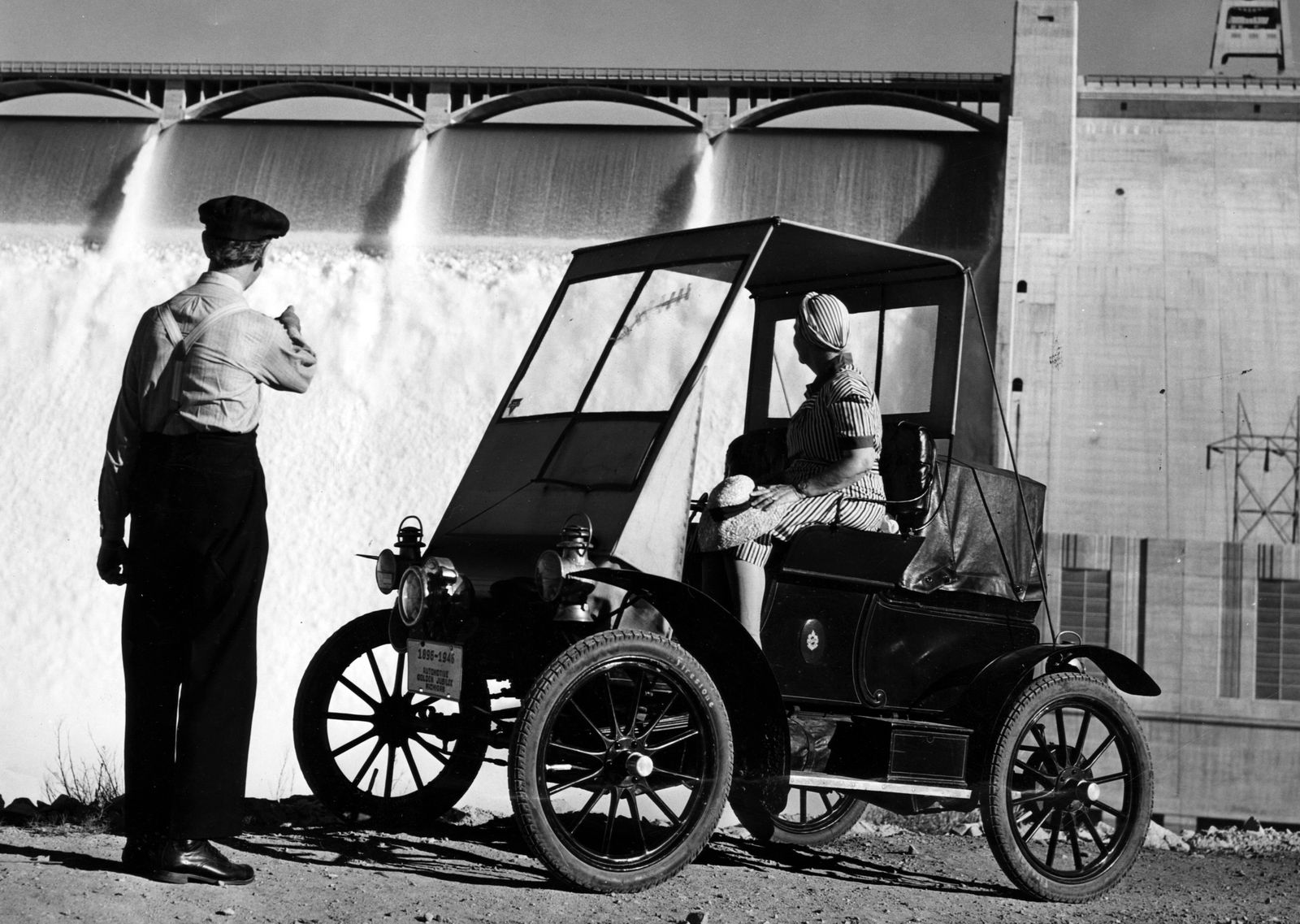
Merry Oldsmobile: Mr. and Mrs. George C Green, Lambertville, N. J., chugged into Grand Coulee this week in their 1904 Oldsmobile for a view of the world’s largest river barrier. They are making a transcontinental tour in the car they have owned since 1907. In spite of its 75,000 miles, the ancient Olds took the grand award in the recent Golden Anniversary parade of the automobile industry at Detroit. The Greens were permitted to drive their 42-year-old car across the 4173-foot roadway atop the dam.
Photo Archive The Spokesman-Review
Share on Social Media